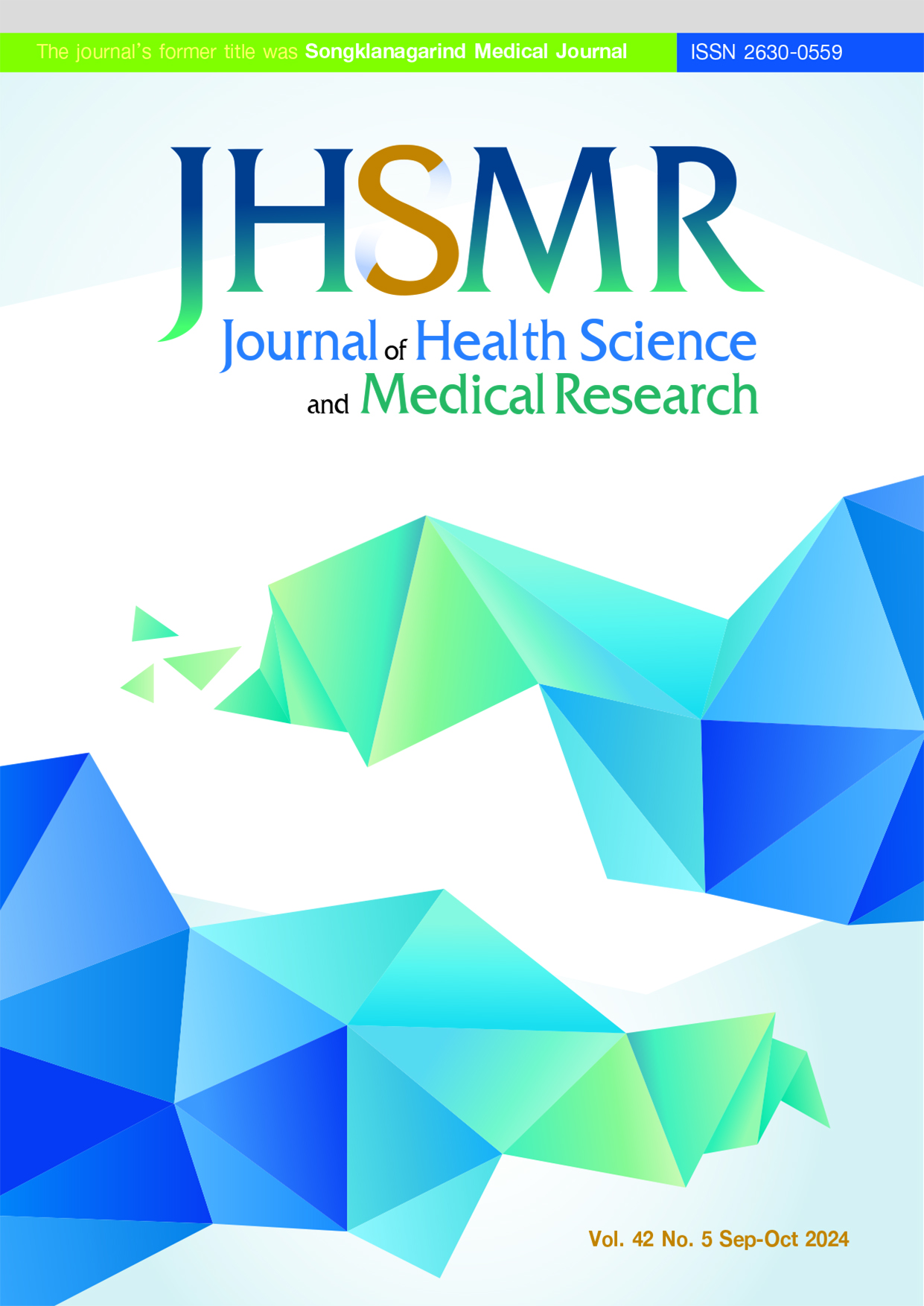Analysis of Time to Relapse among Schizophrenia Patients in St. Amanuel Mental Specialized Hospital, Addis Ababa, Ethiopia
DOI:
https://doi.org/10.31584/jhsmr.20241049Keywords:
frailty models, proportional hazard model, recurrent events, relapse, schizophrenia patientsAbstract
Objective: To investigate the associated factors that affect time to relapse in patients with schizophrenia at St. Amanuel Mental Specialized Hospital, with recurrent events model.
Material and Methods: A hospital-based retrospective review of the medical records of 332 patient with schizophrenia, covering a two-year period, were examined. Parametric frailty models were used to determine the correlation between discharge times and relapse, and to identify risk factors using R-software.
Results: The distribution number of relapses was 162, and the median survival time of patients with schizophrenia was 665 days. The unobserved heterogeneity in patients and correlation between relapses, as estimated by the Weibull-gamma frailty model, was p-value≤0.001 and Kendall’s Tau (Γ)=0.498. This indicated that there was heterogeneity among participants and a correlation between relapses. The final model showed that the effect of psychiatric comorbidity (hazard ratio (HR)=6.522, p-value≤0.001), employment status (HR=5.334, p-value=0.001), history of suicide attempt (HR=2.167, p-value=0.003) and history of traditional treatment (HR=1.973262, p-value=0.021) had a significant effect on the hazard time to relapse. Onset Age of schizophrenia and drug adherence were not predictive. Subsequent relapses are likely dependent on both the first and previous relapses.
Conclusion: Comorbidity, employment status, history of suicide attempt and history of traditional treatment are imperative risk factors influencing the hazard of time to relapse, which increases the risk of relapse.
References
Bolton D. What is mental disorder?: an essay in philosophy, science, and values. International Perspectives in Philosophy & Psychiatry. Oxford: Oxford University Press; 2008.
Sadock BJ. Kaplan and Sadocks synopsis of psychiatry. Philadelphia: Lippincott Williams & Wilkins; 2015.
Ayano G. Schizophrenia: a concise overview of etiology, epidemiology diagnosis and management: review of literatures. J Schizophr Res 2016;3:1026.
Mcgrath J, Saha S, Chant D, Welham J. Schizophrenia: a concise overview of incidence, prevalence, and mortality. Epidemiol Rev 2008;30:67-76.
Rahmati M, Rahgozar M, Fadaei F, Bakhshi E, Cheraghi L. Identifying some risk factors of time to relapses in schizophrenic patients using Bayesian approach with event-dependent frailty model. Iran J Psychiatry 2015;10:123.
Balhara YPS, Verma R. Schizophrenia and suicide. East Asian Arch Psychiatry 2021;2;22:126.
Koeda A, Otsuka K, Nakamura H, Yambe T, Fukumoto K, Onuma Y, et al. Characteristics of suicide attempts in patients diagnosed with schizophrenia in comparison with depression: a study of emergency room visit cases in Japan. Schizophr Res 2012;142:31-9.
Kroken RA, Mellesdal LS, Wentzel-Larsen T, Jørgensen HA, Johnsen E. Time-dependent effect analysis of antipsychotic treatment in a naturalistic cohort study of patients with schizophrenia. Eur Psychiatry 2012;27:489-95.
Davarinejad O, Mohammadi Majd T, Golmohammadi F, Mohammadi P, Radmehr F, Alikhani M, et al. Identification of risk factors to predict the occurrences of relapses in individuals with schizophrenia spectrum disorder in Iran. Int J Environ Res Public Health 2021;18:546.
Kebede D, Alem A, Shibre T, Negash A, Fekadu A, Fekadu D, et al. Onset and clinical course of schizophrenia in Butajira-Ethiopia--a community-based study. Soc Psychiatry Psychiatr Epidemiol 2003;38:625-31.
Shibre T, Medhin G, Alem A, Kebede D, Teferra S, Jacobsson L, et al. Long-term clinical course and outcome of schizophrenia in rural Ethiopia: 10-year follow-up of a population-based cohort. Schizophr Res 2015;16:414-20.
Abdulkarimova U. Frailty Models for Modelling Heterogeneity. 2013 p.1-85.
Wienke A. Frailty models. Wiley StatsRef: Statistics Reference Online. Wiley Online Library 2014.
Gutierrez RG. Parametric Frailty and shared frailty survival models. Stata J 2002;2:22-44.
Raices I, Sistachs V, Liero H, Yera I, Martinez L. Analysis of parametric frailty models to estimate the risk of amputation. Investigación de Operacional 2018;39:33.
Wienke A. Frailty models in survival analysis (1st ed.). New York: Chapman and Hall/CRC; 2010.
Clayton DG. A model for association in bivariate life tables and its application in epidemiological studies of familial tendency in chronic disease incidence. Biometrika 1978;65:141-51.
Hougaard P. Survival models for heterogeneous populations derived from stable distributions. Biometrika 1986;73:387-96.
Oakes D. Bivariate survival models induced by frailties. J Am Stat Assoc 1989;84:487-93.
Van Den Berg GJ, Drepper B. Inference for shared-frailty survival models with left-truncated data. Econom Rev 2016;35:1075-98.
Kazadi N, Moosa M, Jeenah F. Factors associated with relapse in schizophrenia. S Afr J Psychiatry 2008;14:52-62.
Schennach R, Obermeier M, Meyer S, Jäger M, Schmauss M, Laux G, et al. Predictors of relapse in the year after hospital discharge among patients with schizophrenia. Psychiatr Serv 2012;63:87-90.
Downloads
Published
How to Cite
Issue
Section
License

This work is licensed under a Creative Commons Attribution-NonCommercial-NoDerivatives 4.0 International License.
























